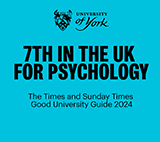
External Seminar: Social-affective dimensions of tuning to natural faces within occipital-temporal cortex
Tuesday 27 June 2017, 4.00PM to 5.00pm
Speaker(s): Sonia Bishop, Associate Professor, Dept. Psychology and Helen Wills Neuroscience Institute, UC Berkeley
Abstract
In many prior fMRI studies, exploration of tuning to facial features has been constrained by use of face stimuli of similar age, status and ethnicity, with limited posed expressions. In the main study I plan to discuss, we sought to overcome these limitations by collecting fMRI data while subjects viewed a large number of real-world faces. By taking advantage of the natural diversity present in these stimuli, we were able to fit and test voxel-wise multi-feature encoding modelsthat captured tuning to a range of semantic and structural face features. Our findings revealed that within non-retinotopic occipital-temporal cortex (OTC), semantic models comprising emotion- and identity-related features outperformed structural models based on facial landmarks or texture. We identified three dimensions that explain significant variance in voxel-wise tuning to semantic features. These encoded facial valence, expression arousal, and dominance. Identity- and expression-related features loaded jointly on the first and third of these dimensions contradicting accounts proposing independent processing of these features. Within the fusiform face area, we observed a posterior to anterior gradient of tuning to all three dimensions. Meanwhile, posterior STS voxels primarily showed sensitivity to face features with high weights on the expression arousal dimension. These findings suggest that social-affective dimensions structure tuning to faces within OTC, potentially reflecting the biological importance of these dimensions. If time allows, I will also present findings from a second study using a similar approach to investigate the cortical representation of emotional natural images spanning a wide range of semantic categories. Findings from this second study indicate that, within OTC, many voxels show combined tuning to stimulus semantic category and emotional content (valence and arousal). This is particularly evident for animate stimuli.
Location: PS/B020
